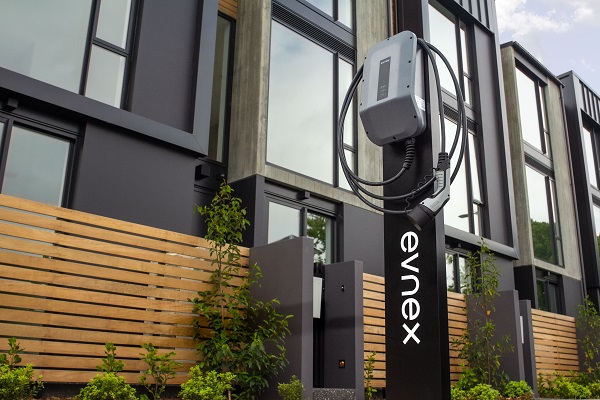EV smart charging vital in helping Australia meet 2050 zero-emission goal
Future-proofing EV charging in Australia will be vital in achieving the country’s 2050 zero-emission goal as electric vehicle uptake continues to soar.
The Electric Vehicle Council 2022 report found that EVs on Australian roads almost doubled last year, rising from 44,000 to 83,000 in 2022. However, Evnex – an Australasian innovator in smart charging – says this rapid uptake could needlessly increase demand on non-renewable energy sources if smart charging isn’t considered a key part of achieving the 2050 zero-emission goal.
ADVERTISEMENT
“While EVs may not generate emissions, the electricity used to charge them may have been created from high carbon sources. Smart charging tools can help make drivers aware of the carbon intensity of the energy they’re using,” Evnex founder and chief executive Ed Harvey says.
“The Electric Vehicle Council says a near-fully zero-emission fleet will be needed by 2050 to meet national emissions targets, but considering how those vehicles are charged, and what this will do to Australia’s grid infrastructure, is vital”.
Evnex’s technology facilitates the largest network – more than 2,500 – of in-home chargers in New Zealand. The ultimate benefit of smart charging technology is the ability to shift and manage EV charging demand, which helps reduce pressure on the power grid during peak times. A single EV charger can have an equivalent impact on peak grid demand as three average homes. Harvey says futureproofing EV charging is a pressing issue in Australia.
“In the future, these vehicles will impact electricity industries in a number of ways, requiring innovations in technology and regulation. The decisions we make now will help ensure that the right infrastructure is in place to reduce the peaks in charging demand and minimise future network reinforcement costs,” he says.
Australia’s strong solar uptake – with more than a third of homes having the renewable energy source – can be harnessed by smart charging, something around half of Tesla owners already report doing, according to the Electric Vehicle Council.
“Our technology helps people take advantage of solar, harnessing locally generated power to charge their EVs cost-effectively while reducing environmental impact. Instead of returning excess energy generated back to the grid, people can choose to divert it to charge their EV from 100 per cent renewable energy,” he says.
Evnex has installed residential chargers in Victoria, South Australia, Western Australia, New South Wales, and Queensland, with demand growing. It has recently introduced its Electricity Pricing tool, designed to make it as simple as possible for EV owners to manage and track charging costs and gain an accurate picture of in-home charging expenses.
-
ADVERTISEMENT
-
ADVERTISEMENT


